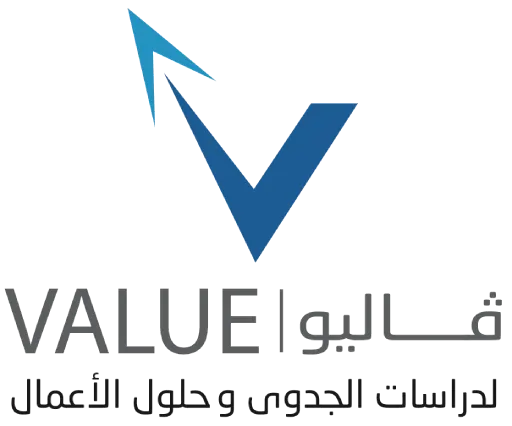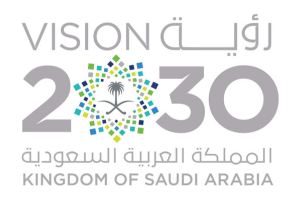feasibility Study vs. Business Plan: what’s the difference?

table of Contents:
introduction
feasibility Study
business Plan
key differences between a feasibility study and a business plan
introduction:
in the world of entrepreneurship, setting the course of a project is a crucial step towards success, and essential tools such as a feasibility study and a business plan are crucial elements that contribute to this success. although they both address vital aspects of project development, their purpose is quite different. a feasibility study focuses on assessing the feasibility of a project before it is launched, while a business plan lays the groundwork for implementing the project and achieving its goals once it is proven to be feasible. in this article, we explore the key differences between these two tools, to help you understand when and where to use each to ensure the success and sustainability of your project.
a feasibility studyand a business plan are two key tools in the business world, and are often confused because they overlap in some ways. however, each has a different purpose and is used at different stages of the project lifecycle. in this article, we will look at the difference between them in terms of purpose, content, and use.
1. what is a feasibility study?
a feasibility study is a comprehensive analysis used to evaluate a project idea before it is implemented. it aims to provide an accurate picture of a project’s feasibility, economic and social feasibility, as well as identify potential risks. a feasibility study is an essential tool that helps entrepreneurs and business owners decide whether to move forward with the project or stop and rethink.
components of a feasibility study
– Market Analysis
market analysis is an essential step to understand the environment in which the business will compete.
study the projected demand:
analysing the extent to which the target market needs the product or service.
evaluate current and future demand, taking into account changes in consumer habits.
example: if the project is about selling technology products, the age groups that are most interested in technology are analysed.
evaluate the current supply and competition:
study similar projects and analyse their strengths and weaknesses.
identify market opportunities and threats to the business.
example: if there is a successful similar project, identify what differentiates it and explore how to provide additional value.
– Technical feasibility
technical feasibility focuses on the extent to which the project is technically and humanly feasible.
identify the technical and human resources required:
evaluate the hardware and equipment needed for the project, such as machinery or software.
determine the number of qualified personnel required and their essential skills.
example: if the project is in manufacturing, determine the type of machinery and the expertise of the technicians needed to operate it.
evaluate the implementation possibilities:
study the readiness of the site and the required technology.
ensure that the appropriate infrastructure is in place to implement the project.
example: if the project depends on the importation of raw materials, the possibility of continuous and efficient supply must be assessed.
– Financial feasibility
financial feasibility is one of the most important elements of the feasibility study, where financial returns are assessed against costs.
estimate the total costs of the project:
include all costs related to starting the project, such as start-up, operating, and management costs.
divide the costs into fixed and variable costs to clarify the financial burden of the project.
example: if the project needs to rent a site, the annual rental cost is included in the fixed costs.
calculate the expected revenue and return on investment:
analyse the potential revenue based on prices and expected sales volume.
estimate the capital payback period and the expected annual profit percentage.
example: if the cost of the project is $1 million and the expected return is $1.5 million in 3 years, the project is profitable with a good return on investment.
– Risk Analysis
risk analysis helps to anticipate potential obstacles and develop plans to deal with them.
identify potential obstacles:
examine the challenges that the business may face, such as economic fluctuations, market changes, or the emergence of new competitors.
analyse how these challenges will affect the success of the project.
example: if the project relies on imported raw materials, exchange rate changes may have a significant impact on the cost.
how to deal with risks:
develop alternative plans to address crises, such as diversifying sources of supply or improving operational efficiency.
identify strategies to minimise losses in the event of an issue.
when is it used?
a feasibility study is used at the decision-making stage before starting a project. this stage is essential to avoid wasting financial and human resources and to ensure that the project will achieve its economic, social and environmental objectives.
2. what is a business plan?
a business plan is a detailed operational document prepared after the decision to proceed with the project has been made based on a feasibility study. the plan aims to develop a practical strategy for achieving the project’s objectives by defining the steps and actions that will be implemented. the business plan is a roadmap that ensures that the project is managed efficiently and organised, helping to achieve success and sustainability.
components of the business plan
– Project Description
this section includes a clear and simple explanation of the project, its objectives, and its products or services.
define the project:
provide a general idea of the nature of the project and its main activity.
example: “A business that offers sustainable products for homes.”
describe the products or services:
highlight the added value the business brings to the target market.
focus on how the business meets customer needs and solves their issues.
example: if it is an e-commerce business, describe the ease of ordering, the quality of the products, and the speed of delivery.
– Organisational Structure
the organisational structure is the framework that defines how the project will be managed and the distribution of tasks among the team.
identify the working teams:
assign roles and responsibilities to each team member.
example: project manager, sales team, and customer service.
internal organisation:
create a detailed organisational chart that includes different departments such as marketing, operations, and finance.
define the relationships between departments to ensure effective coordination.
– Marketing Plan
a marketing plan is a key element that focuses on strategies for promoting products or services.
marketing strategies:
creating marketing strategies that suit the target market such as digital marketing, paid advertising, and promotions.
example: if the business is targeting youth, you can focus on using social media.
identify sales channels and target audience:
choose the most appropriate channels to sell products such as e-commerce or brick-and-mortar stores.
segment the target audience based on age, interests, or geographical location.
example: if the business sells tech products, the target audience may be young people who are interested in technology.
– Financial Plan
the financial plan focuses on the financial aspects of the project and ensures that expenses and revenues are organised.
operating budget:
identifies the fixed and variable costs associated with running the business.
example: employee salaries, rental costs, or raw material costs.
projected cash flow:
estimate monthly revenues and expenses to ensure a continuous positive cash flow.
analyse where additional investments may be required to ensure the stability of the business.
example: estimate monthly profits at 20% of sales volume.
– Operational Plan
the operational plan focuses on the day-to-day activities and how to manage them to ensure efficient operations.
define the daily operations:
create a list of daily tasks such as producing products, delivering orders, or following up with customers.
divide the tasks among the team to ensure that operations run smoothly.
schedule the work:
set deadlines for each task and make sure they are aligned with the overall project goals.
example: if the business is a delivery company, accurate delivery schedules need to be set.
when is it used?
a business plan is used after the feasibility of the project has been established to ensure that activities are carried out in an efficient and organised manner.
3. key differences between a feasibility study and a business plan
element
feasibility study
business plan
objective
evaluate the feasibility of the project before starting
develop a detailed plan to implement the project and achieve success
phase
conducted before the start of the project
prepared after confirming the feasibility of the project
content
market, technical, financial and risk analysis
organisational structure, day-to-day operations, marketing
result
decision to start the project or look for alternatives
a clear implementation strategy
in conclusion, whether you are at the beginning of your entrepreneurial journey or at the planning stage of a new venture, understanding the difference between a feasibility study and a business plan is crucial. a feasibility study helps you make an informed decision about the feasibility of the project, while a business plan is the roadmap that ensures you organise your operations and execute your strategies successfully. by applying both at the right time and place, you can maximise the chances of your project succeeding and achieving its goals efficiently and effectively. feel free to reach out to us for additional consultancy or support in planning and implementing your project.
don’t hesitate to contact us via WhatsApp or contact us for additional consultancy or support in planning and implementing your project. we are here to help you every step of the way!
rEAD ALSO: feasibility studies for startups in specific fields





